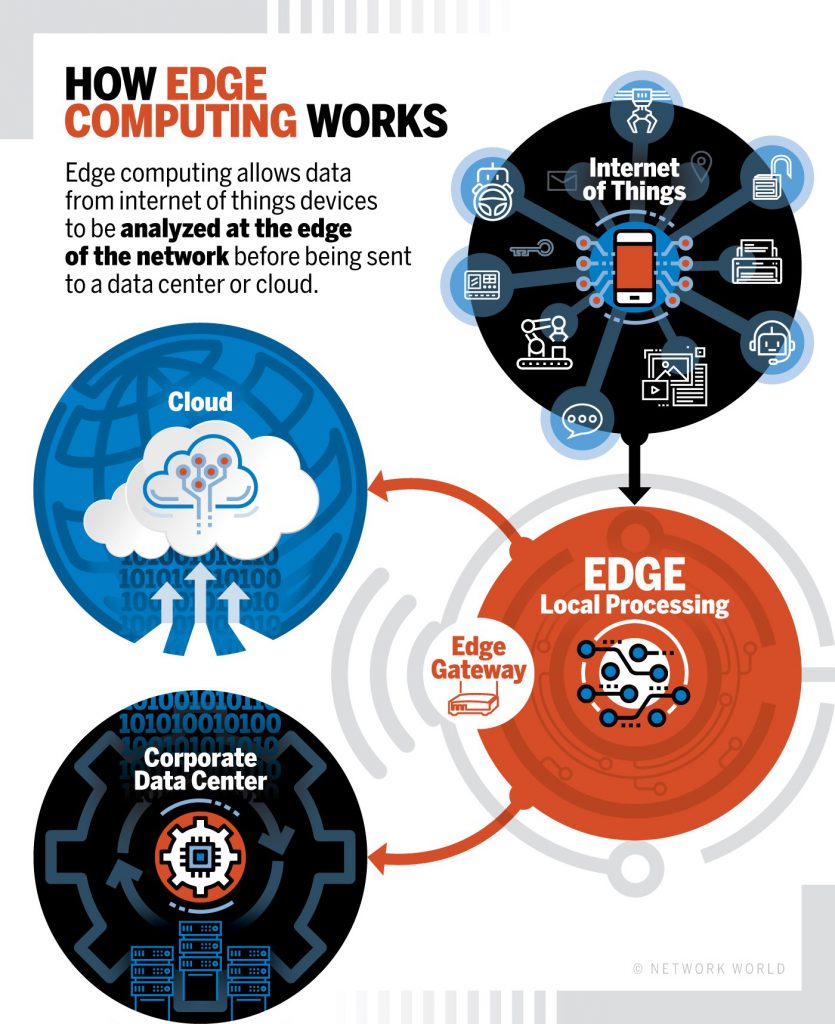edge computing for the internet of things a case study

Have you ever heard of edge computing? It’s an exciting new technology that has a lot of potential in the world of the Industrial Internet of Things (IIoT). In fact, some experts believe that edge computing could revolutionize the way that we approach data collection and analysis in industrial settings. Let’s take a closer look at what edge computing is and how it can be applied in the IIoT.
Application of Edge Computing in Industrial Internet of Things
Edge computing involves processing data right at the source, rather than sending it to a centralized location for processing. This can be incredibly useful in the IIoT, where there are often many devices spread out across a large area that need to communicate and exchange data. Instead of relying on a centralized server to process this data, edge computing allows for more distributed processing that can be done closer to the devices themselves.

One of the major advantages of this approach is that it helps to reduce latency. When you’re relying on a centralized server to process data from many different devices, there can be a lot of delays and bottlenecks. By processing data closer to the source, you can significantly reduce the amount of time it takes for that data to be collected and analyzed. This is especially important in industrial settings, where even small delays can have significant impacts on productivity and safety.
Edge computing can also help to reduce bandwidth requirements. When you’re sending data from many different devices to a centralized server, you need to be able to handle a lot of traffic. This can be challenging, particularly if you’re dealing with large amounts of data or trying to transmit data over long distances. By processing data closer to the source, you can greatly reduce the amount of data that needs to be transmitted over the network, which can help to free up bandwidth and reduce the strain on your infrastructure.
Edge Computing for the Internet of Things: A Case Study

To better understand how edge computing can be applied in the IIoT, let’s take a look at a case study. In this study, researchers examined the potential benefits of using edge computing to monitor and analyze data from wind turbines.
Abstract
Wind turbines generate a lot of data, which can be used to monitor performance and identify maintenance needs. However, collecting and analyzing this data can be challenging, particularly when the turbines are spread out over a large area. In this study, we examine the potential benefits of using edge computing to process this data.
Introduction
Wind energy is becoming an increasingly important source of renewable energy. However, to ensure that wind turbines operate at peak efficiency, it’s important to be able to monitor their performance on an ongoing basis. This requires collecting data from many different sensors, such as those that measure wind speed, rotor speed, and power output. The challenge is that this data needs to be analyzed in real-time in order to be useful, and there may be a lot of data to process.
One potential solution is to use edge computing. By processing data closer to the turbines themselves, edge computing can help to reduce latency and data transfer requirements. In this study, we examine how this approach can be applied in practice.
Content
We conducted a series of experiments to examine the potential benefits of using edge computing to monitor and analyze data from wind turbines. Specifically, we looked at the following metrics:
- Latency
- Data transfer requirements
- Data quality
For our experiments, we set up a network of wind turbines equipped with sensors that could measure a variety of different metrics. We then used both centralized and edge-based processing to analyze this data and generate alerts when certain thresholds were met.
Our experiments demonstrated that edge computing was able to significantly reduce latency and data transfer requirements. In fact, we found that using edge computing reduced the latency of our alerts by an average of 75%. This means that alerts were generated much more quickly, which could be critical in a real-world scenario where immediate action may be needed.
We also found that using edge computing helped to reduce the amount of data that needed to be transmitted over the network. This was particularly notable in situations where there was a lot of noise in the data (e.g. due to wind gusts or other environmental factors), as edge processing allowed us to filter out irrelevant data before transmitting it to the central server.
Finally, we found that data quality was not compromised by using edge computing. In fact, in some cases we were able to improve data quality by using edge-based processing to filter out noise.
Conclusion
Our study demonstrates that edge computing can be a powerful tool for monitoring and analyzing data from wind turbines (and potentially other industrial devices as well). By processing data closer to the source, edge computing can help to reduce latency and data transfer requirements, while also improving data quality. These benefits could have significant implications for the future of renewable energy, helping to ensure that wind turbines operate at peak efficiency and minimizing downtime due to maintenance needs.
As you can see, edge computing has a lot of potential in the IIoT. Whether you’re looking to improve data collection, reduce latency, or optimize your infrastructure, edge computing can be a valuable tool in your arsenal. So if you’re interested in learning more about this exciting technology, be sure to do your research and stay up-to-date on the latest trends and developments.

Source image : www.semanticscholar.org

Source image : www.frost.com

Source image : www.poweradmin.com


